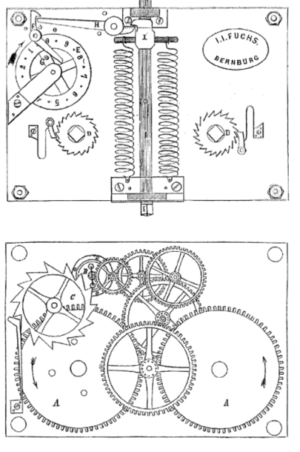This is another oddity. Alexander Keith was born a Scotsman in 1827. He worked in Canada for a while and then worked for the Confederate States in the American Civil war as a blockade runner. In one escapade he was involved in what would today be called a chem bio plot to send clothes infected with yellow fever into the Northern cities in the United States.
It appears that he attempted to swindle some colleagues and fled to St Louis and then settled on the prairie. However one of his alleged victims tracked him down and he fled again, this time to Europe, where he assumed the name of “William King Thomas”, and later the alias William Thompson. As he began to run out of money, in 1875, he concocted a complex insurance fraud that involved blowing up a passenger ship. But his plans went badly wrong.
Keith hid a large timed IED in a barrel and arranged for it to be shipped across the Atlantic to New York in the steamship Mosel. As the barrel was being loaded onto to the Mosel, the barrel slipped, fell and exploded on the dockside in Bremerhaven. There must have been a significant quantity of explosives, and in a massive explosion 80 people were killed. A witness stated ” “A mushroom-shaped column of smoke rose approximately 200 meters above the harbor. Everywhere people were crying and whimpering beside ruins. The entire pier was covered in soot: it was like the gateway to hell.” Newspapers of the time dubbed the incident the “crime of the century”.
Interestingly Keith was on the Mosel and clearly understood that his plan had gone wrong. He had intended to sail on the ship, but leave it, and its explosive cargo, when he got to Southampton. He went to his cabin immediately, and shot himself in the head twice (think about that…) . In the drama of the post blast no-one noticed the two shots from his cabin – only later did someone hear a groaning from his cabin. The door, locked from the inside, was broken down and Keith found lying on the floor, still alive. A revolver was by his side with 4 remaining bullets. His second shot paralyzed him.
Now, as I have written before, placing IEDs on ships was something that confederate agents had done before. (My next blog post will be about confederate “coal torpedo” IEDs used to damage ships) But by 1870 dynamite had become available significantly increasing the potential of an IED. As we know, Confederate IEDs had utilized clockwork mechanisms. Keith needed to obtain one for his plan, and had approached a German clock making company called JJ Fuchs of Bernberg, with a request for a silent spring-loaded mechanism capable of functioning after a 10 day delay. Keith refused to explain why he needed the mechanism but Fuchs designed it nonetheless. The mechanism was large and weighed about 30 pounds, and was so expensive that Keith initially refused to buy it. He approached two Viennese clock makers for a cheaper alternative but they failed, so eventually he returned to Fuchs.

The Fuchs timing mehcanism
There remain suspicions that Keith may have been involved in the disappearance of at least two other ships, The SS City Of Boston in January 1875 and the schooner Marie Victoria in 1864.

The suicide note
